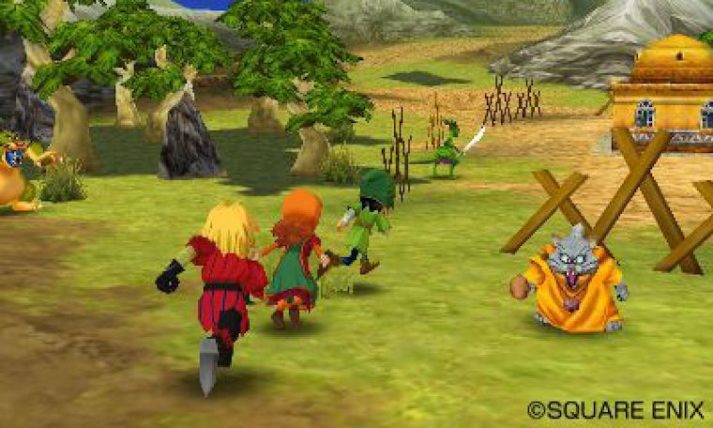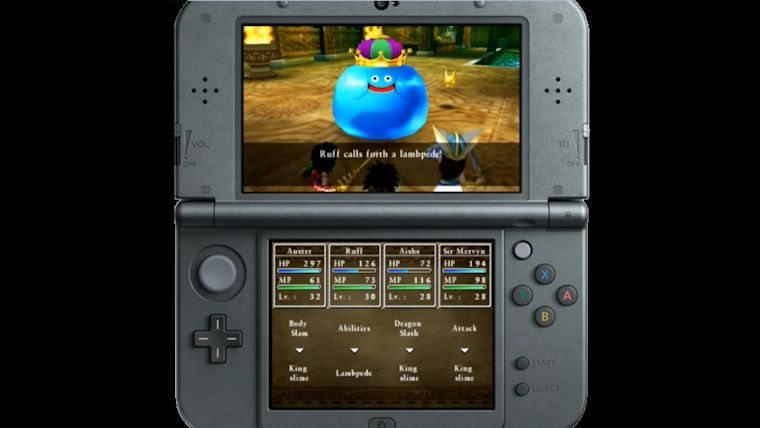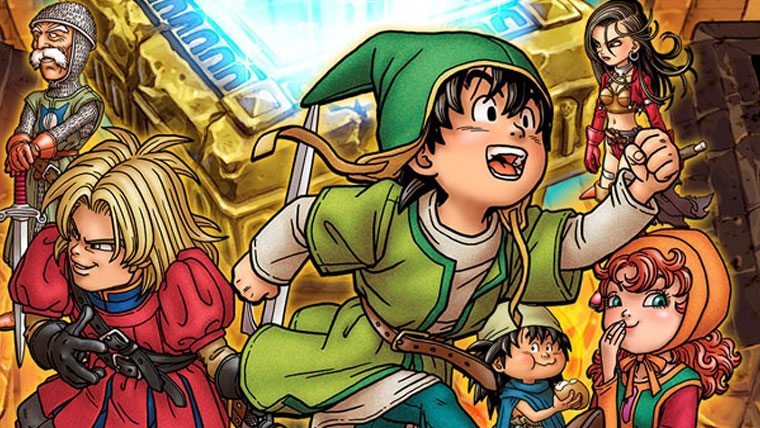The Dragon Quest series has been around since the very early days of the NES, though the first few entries were known as Dragon Warrior when released in the US. After skipping the fifth and sixth entries that were on the Super Famicom, the US did see the release of Dragon Quest VII for the PS1, which was re-released on the 3DS in Japan back in 2013. After years of wondering if the US would actually see this release, it is finally here for the 3DS under the new title Dragon Quest VII: Fragments of the Forgotten Past.
While the original release for Dragon Quest VII on PS1 was an upgrade on past entries at the time, it really looks quite dated now. Instead of just giving that original game a shiny coat of paint, the entire look and design was completely remade in Dragon Quest VII: Fragments of the Forgotten Past. The environments and especially the character models have been revamped to look more like those found in Dragon Quest VIII and Dragon Quest IX, the latter of which was also for the 3DS. While a great RPG doesn’t rely on graphical prowess, the upgrades found in this 3DS remake really do make the experience even better than before.
Dragon Quest games have always been known for their enthralling stories and Dragon Quest VII: Fragments of the Forgotten Past is no different. The game starts off with a very small island that only holds two towns, which is believed to be the only continent still afloat. However, a group of young adventurers stumble upon different colored fragments that fit into pedestals in a nearby off-limits shrine and get transported to the past, with each pedestal leading to a different continent that existed in the past.

On each of these new continents, you must further the story by helping the people of the continent in some way. By doing this, you will eventually travel back to the present and notice that a new continent has been discovered, which happens to be the very one you just saved in the past. This back and forth can get a little confusing at times with the characters found in the different times, but it works very well at a story element that will keep players interested throughout this very long time, as long as they can get past the beginning.
One of the biggest flaws with the original Dragon Quest VII was the very lengthy opening that led to the beginning feeling quite boring. This has thankfully been scaled down in Dragon Quest VII: Fragments of the Forgotten Past, but it is still a little too long. There is a lot of exposition to start the game, along with a lot of back and forth exploration, and it still takes quite awhile to even get to the first fight in the game. It makes sense in the grand scheme of the story with the first fight not occurring until they visit the first island in the past, but they could have added in some sort of fights as a tutorial earlier to provide a little more action. As soon as you get past this shorter, but still boring opener, everything will be smooth sailing moving forward thankfully.
RPGs are often known for their lengthiness, and Dragon Quest VII: Fragments of the Forgotten Past is definitely on the higher end of that spectrum. Just playing through the game itself without much straying for sidequests can take you easily over 100 hours. The good thing is that this isn’t a case of the game just being stretched out much further than it should be, outside of the slow opening, but rather it just has that much content. This can definitely be quite daunting for someone that is afraid they won’t have the time to play that much. However, this is what makes this new remake even better than the original, as a game like this is perfectly suited for a handheld.
Dragon Quest VII: Fragments of the Forgotten Past is a game that you can just pick up and play here and there, with the ability to just shut your 3DS and continue from the exact same spot later, even if you were in the middle of a dungeon. This definitely helps as you can only fully save at churches, and the Quick Save that allows you to temporarily suspend the game can only be done in certain areas.

Like the Final Fantasy franchise, Dragon Quest features standalone games that are not tied to its previous entries storywise, but still maintain many of the same core elements and creatures as in the past. This is once again seen as the designs are directly from Akira Toriyama, best known for writing and illustrating Dragon Ball. These upgraded designs are nothing shockingly different from what Toriyama has done with the Dragon Quest series in the past, but they fit this colorful world that is found in Dragon Quest VII: Fragments of the Forgotten Past.
Perfectly suited for a handheld
The variety of different and often over the top enemies are also present as always, including the fan favorite Slimes. The encounters around the world for these monsters are quite different from the original though, taking inspiration from the more recent entries. While walking around the 3D landscape outside of towns, you will typically see plenty of monsters on the screen. By running into these enemies, you will start a battle, but you can also try to avoid them. This works much better here than in the original game where the encounters were completely random.
After running into an enemy in the overworld, you will be thrust into a turn based battle sequence that takes the original style and transitions it to 3D. The actual combat remains the same where your team takes on the enemy forces, with the order of attack coming based on the speed of each character and creature. Everybody has their basic attack, which is based on the weapon they have equipped, along with spells and abilities that you will unlock the further you get into the game, which are split between offensive, defensive, and other.
The types of spells and abilities that you can learn in the game will be dependent on what vocation your character is at that point. Classes play a very important role at shaping not only your characters, but the layout of your party as you get further in the game. With the largest number of vocations in the series, there are more than 30 to choose from in the game, including even monster vocations, which provide different boosts to different areas of the gameplay. Ranking up the individual classes is really important, and it’s great that you can maintain what you’ve earned in one vocation even if you switch to another. Much later in the game, if you level up certain classes high enough that pair together, you can access special hybrid classes that are even stronger. This adds yet another goal that you can strive for in the game, which will keep you playing for hours on end.

Beyond just fighting monsters throughout the world, you will also eventually reach a seemingly empty island known as The Haven that has a much different goal. After meeting a young girl here, you will be tasked with finding reformed monsters that will be disguised throughout the rest of the game, which will then come to the island and live. By performing this task, you will be given a Traveler’s Tablet that will unlock a small dungeon. Eventually, you will unlock the ability to download more Traveler’s Tablets that are distributed online, as well as being able to get monsters through StreetPass. The addition of The Haven isn’t the biggest selling point of the game, but it’s a nice treat to have on top of the already fantastic main game.
The Verdict
Dragon Quest VII was already a great game when it released on PS1 15 years ago, but the remade Dragon Quest VII: Fragments of the Forgotten Past takes that experience and improves on it twofold. The rebuilt visuals look great on the 3DS and pair well with the already exceptional story and gameplay to make Dragon Quest VII: Fragments of the Forgotten Past the definitive experience for the seventh entry in this long running franchise.











Published: Sep 13, 2016 08:00 am